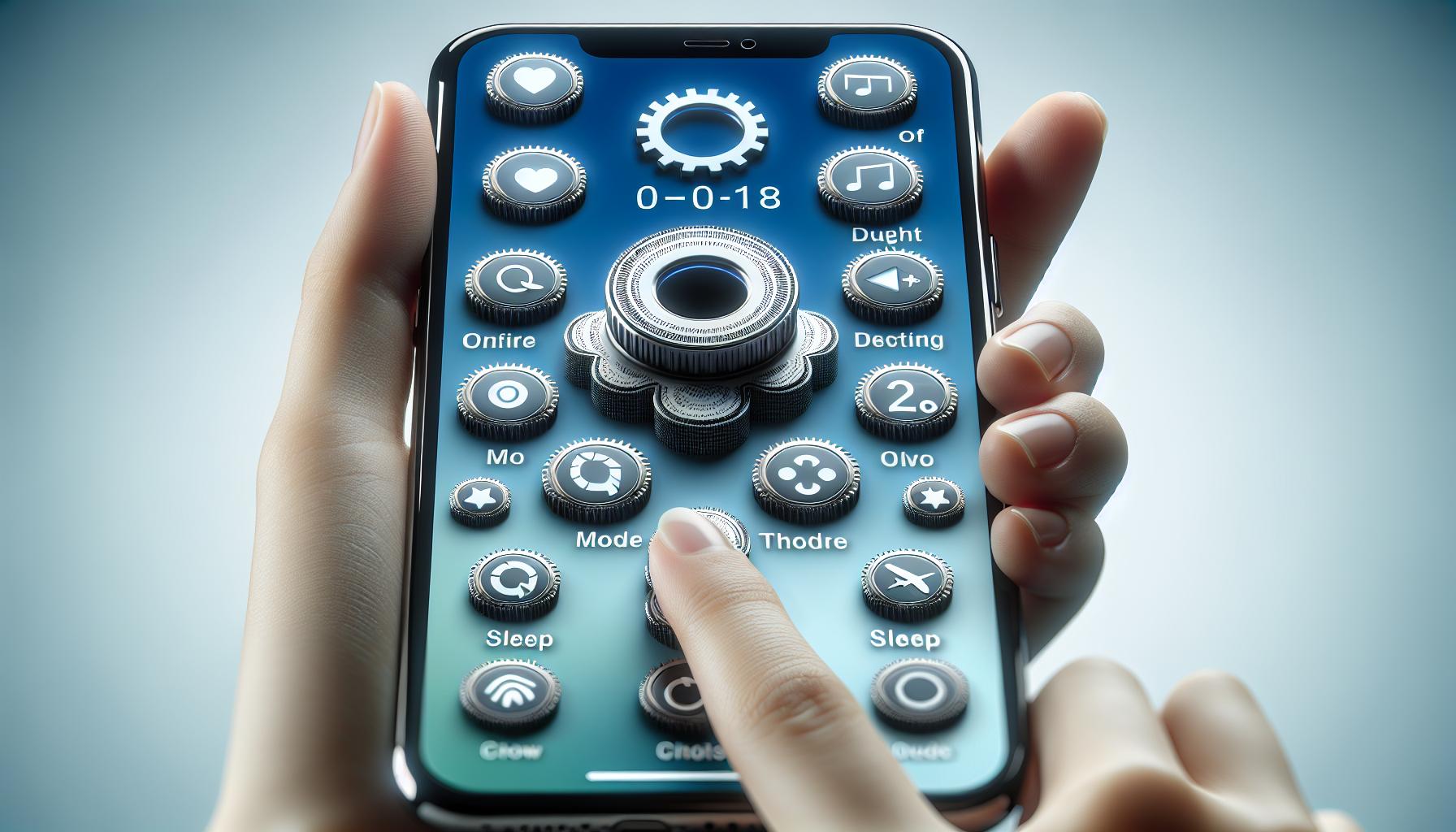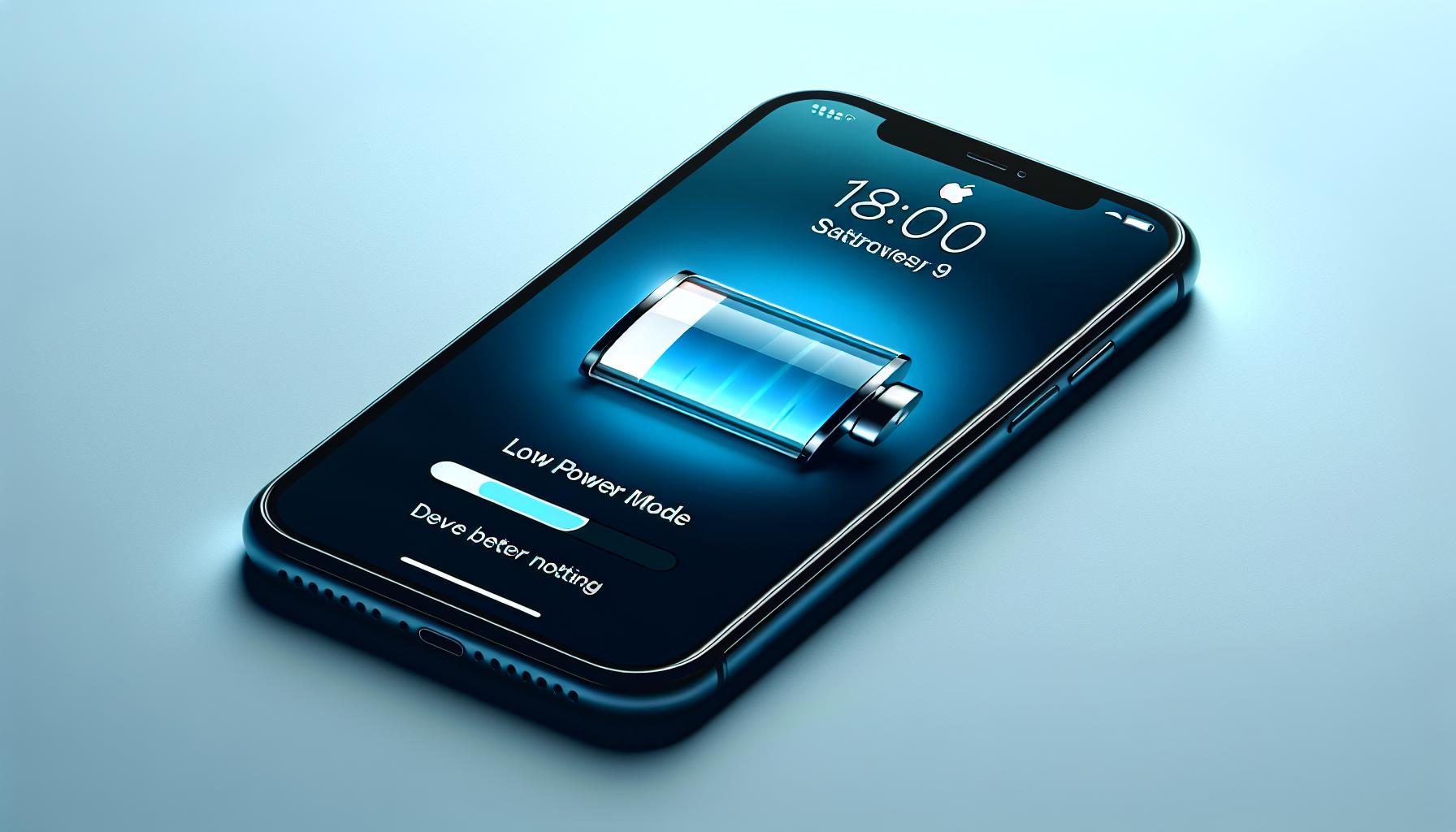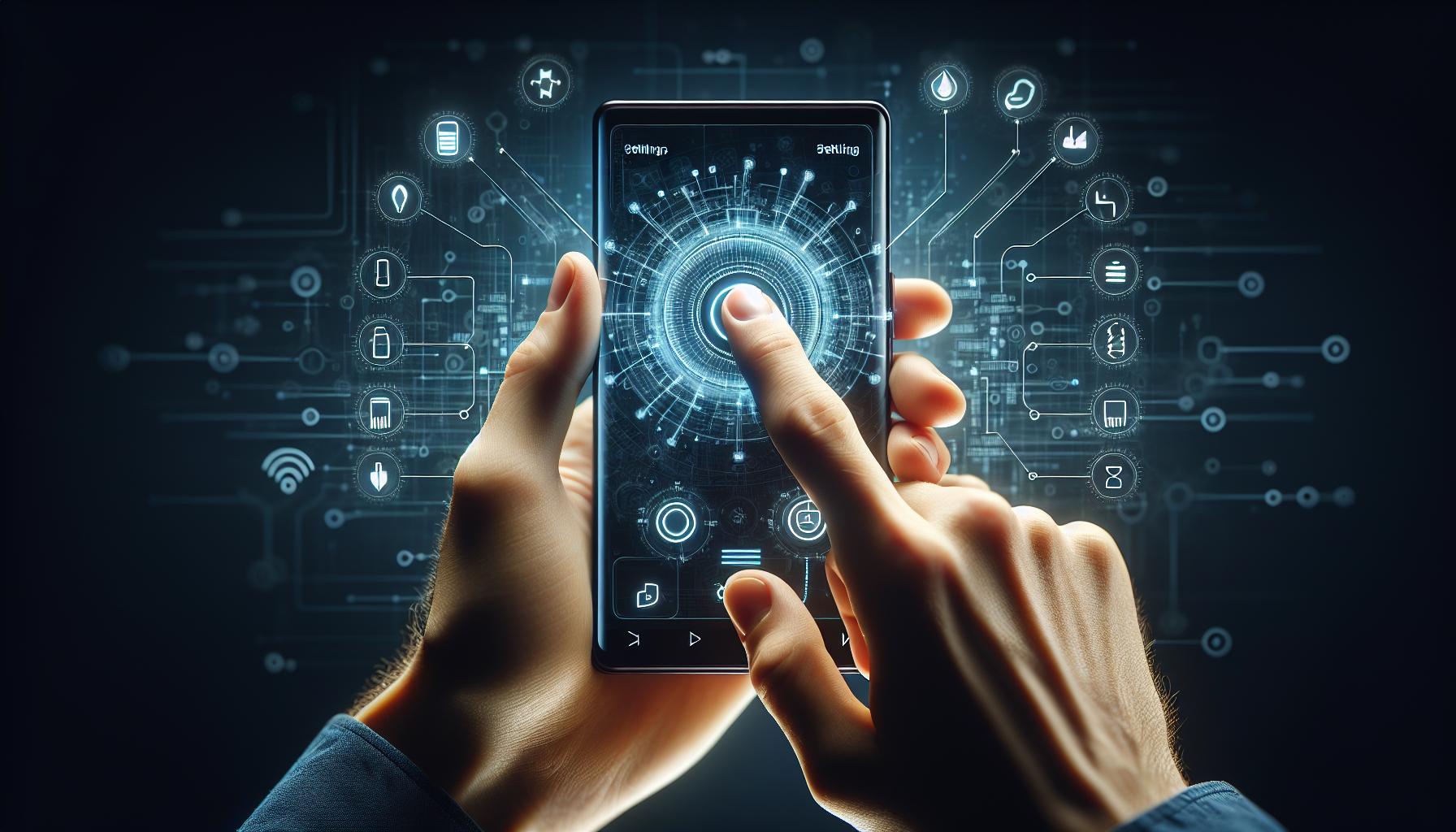Ever found yourself in the middle of an important task on your iPhone, only to have it slip into sleep mode? It's a common issue, but one that's easily fixed. You're not alone in wanting to know how to turn off sleep mode on your iPhone.
This guide will walk you through the steps to keep your iPhone awake for longer periods, or even stop it from sleeping altogether. It's a simple process that you can do in just a few minutes. So, let's dive in and get your iPhone to stay awake as long as you need it to.
Why Sleep Mode can be a Problem on iPhone
Imagine this: you're in the middle of a critical task on your iPhone. Perhaps you're following a recipe and your hands are full or maybe responding to an urgent email. But your screen dims and then it goes black. This is the iPhone’s sleep mode in action, automatically kicking in to save energy.
But what if you don’t want it to sleep? Isn’t it frustrating? This auto-sleep function, while designed with the best of intentions, can sometimes be more of an annoyance rather than a help. Let's delve a little deeper to understand why.
User Disruption
Sleep mode interrupts user activity. This might not sound like a huge deal unless you're in the middle of something critical. For example, reading a long article, using your device for navigation, or holding a video call. Also, in scenarios where touch interaction is not feasible - like cooking or repairing something with messy hands - sleep mode can disrupt the flow of your work.
Productivity Loss
The second issue is productivity loss. Sleep mode forces you to periodically wake up your device by pressing buttons or tapping the screen. This can be a roadblock when you're multitasking or focusing on an intricate task.
Lost Data
Lastly, sleep mode can result in lost data. When your screen goes black, any unsaved input may be lost. If you're midway through typing an email or a document, this can be quite a setback.
Therefore you see, while sleep mode is energy-efficient and increases battery life, it can also be an annoyance and cause unexpected problems. Understanding how to manage your iPhone's sleep settings can bring a better smartphone experience.
How Sleep Mode Works on iPhone

A better understanding of the iPhone sleep mode will aid in your device management. Picture this - you're working on a critical job on your iPhone and suddenly, it goes to sleep. Annoying right? This is where sleep mode comes into play.
The primary function of sleep mode on your iPhone is to conserve battery life. If you're not using your phone, it automatically goes into sleep mode after a certain period of time. This period can range from 30 seconds to 5 minutes, depending on your settings.
But how exactly does this happen? The iPhone utilises a built-in accelerometer to detect when it's not in use. When the device is idle, the accelerator sends a signal to your iPhone, triggering it to dim the screen before eventually going to sleep.
However, keep in mind that while your iPhone is in sleep mode, apps and processes running in the background are still active. This means your emails are updating, message notifications are arriving, and any active downloads are continuing. So, even if your screen’s off, your iPhone is still working.
Being aware of how this process works is a stepping stone to adjusting the settings according to your needs. Take control of your iPhone's sleep mode and tune it to suit your usage pattern. As the saying goes, knowledge is power, so use it to master your device. It's all about finding the balance between device activity and battery life.
Adjusted correctly, your iPhone can remain awake through important tasks, removing the risk of sleep-induced disruptions. In the next section, let's delve into how you can keep your iPhone awake for longer periods or even prevent it from sleeping altogether.
Adjusting Sleep Mode Settings on iPhone
The iPhone's sleep mode is an incredibly useful function, but sometimes you may need to take control. Adjusting the settings can help keep your iPhone awake longer during important tasks, therefore avoiding sleep-induced disruptions. But does the question remain: how do you do it?
Well, it's easier than you might think. Let's go through the steps needed to adjust the sleep mode settings on your iPhone.
First, open your Settings app. It's generally found on your home screen and is denoted by a silver grey icon with gears on it. Once you've opened up the app, you'll need to scroll down until you find Display & Brightness. Tap on it and you'll want to look for a setting called "Auto-Lock".
Interestingly, the Auto-Lock setting essentially controls your iPhone's sleep mode. It determines how long your iPhone screen stays on before it locks and goes to sleep. It's worth noting that the shorter the time, the more battery life you save; your iPhone uses a lot of power to keep the screen lit.
So in this section, you can select the amount of time that suits your needs. The choices range from 30 seconds to Never. You can select the "Never" option to turn off sleep mode completely. Remember to consider your battery life when making these adjustments.
But what if you want to override these settings temporarily? Maybe you're downloading a large file, waiting for an important call or using a GPS app during a road trip. These are times when you want your iPhone screen to stay awake for longer without having to change your sleep settings permanently.
For this, you'd need to activate the "Stay Awake" feature. It's a straightforward process, similar to the sleep mode adjustment. You'd go to the Settings app, select Display & Brightness, and then tap into the Auto-Lock setting. This time, instead of opting for time intervals, you'll select the "Stay Awake" option.
This gives you the power to temporarily stop your iPhone from going into sleep mode and ensure you're able to complete any tasks at hand without any disruptions. Please note that this feature will consume more battery power, so use it judiciously.
Step-by-Step Guide to Turning Off Sleep Mode on iPhone
Now that you're well-informed about the implications of sleep mode, it's time for a straightforward step-by-step guide to help alleviate this minor annoyance.
Firstly, unlock your iPhone and access the Settings application. This cog-like icon commonly resides on the home screen of your iPhone.
Your next stop will be the Display & Brightness section. Clicking on it leads you to a comprehensive set of options for your iPhone's screen.
From here, hit the Auto-Lock option. It's typically towards the bottom of the menu - you'll see a range of time options from 30 seconds to Never. If you're tired of your iPhone diving into sleep mode during important tasks, the 'Never' setting might be your remedy.
The following table shows the steps needed:
| Step | Action |
|---|---|
| 1 | Unlock iPhone |
| 2 | Open 'Settings' |
| 3 | Select 'Display & Brightness' |
| 4 | Tap 'Auto-Lock' |
| 5 | Choose 'Never' |
Remember, keeping the Auto-lock feature off might be a solution but could drain your battery life faster. If you're far from a power source and need your iPhone to last, simply activate the Low Power Mode in the battery settings. Choose wisely to manage both, your important tasks and battery life, efficiently.
Yet another feature your iPhone packs is the "Stay Awake" option. While the process varies slightly depending on your model, it can be a lifesaver during those intense working or gaming sessions where every second counts. For this, navigate to the 'Accessibility' menu in the Settings application, and follow the 'Display & Text Size' path. Here, swipe down and turn on the 'Tap to Wake' feature.
That's it, a couple of steps and no more interruptions from sleep mode. Fine-tune your settings as you need and keep your iPhone awake during those all-important tasks. Remember, it's always a delicate balance between utility and battery life. Balance is key.
Tips for Extending Battery Life without Sleep Mode

Turning off iPhone's sleep mode does give you uninterrupted screen time, but it also has its downsides. Among these, the most significant is battery drain. Wondering how to counteract this issue? Here are some quick tips to extend your iPhone's battery life without depending on sleep mode.
Optimize Your Settings
To strike an ideal balance between utility and battery longevity, you need to optimize your device's settings.
- Reduce your iPhone's screen brightness. You'd be surprised at how much battery life you can save by taking this simple step. It's easy. Just go to Settings > Display & Brightness and adjust the slider.
- Deactivate background app refresh. This feature automatically updates your apps, which might be a significant battery drain. To turn it off, navigate to Settings > General > Background App Refresh, and pick 'Off'.
- Turn off dynamic wallpapers and motion effects. Yes, they can make your screen look interesting, but they also consume a lot of energy. Switch to static wallpapers instead and keep your home screen more battery-friendly.
Use Low Power Mode
The value of Low Power Mode in conserving battery life cannot be overstated. This energy-saving feature modifies several settings to reduce power consumption when your battery starts to drain.
To enable Low Power Mode, you only have to go to Settings > Battery and switch on the option. Remember how crucial this feature is, especially when Sleep Mode is off.
Reduce Push Email Frequency
Do you need every email notification the instant it lands in your inbox? If not, consider reducing the frequency of push email checks. Less frequent checks mean less strain on your battery.
To manage this, go to Settings > Mail > Accounts > Fetch New Data, and select 'Manually' or the least frequent option that suits your needs.
Turn off Unnecessary Notifications
Minimizing screen time for your iPhone also equates to extended battery life. Reduce unnecessary distractions and save energy by turning off notifications for apps you do not frequently use. Head over to Settings > Notifications and manage which apps can send alerts.
There's a world of options available to help keep your iPhone's energy usage at a minimum. Experiment with different ones, and find what works best for you.
Conclusion
So you've got it, turning off sleep mode on your iPhone isn't as daunting as it may seem. By navigating through your Settings to Display & Brightness and selecting the Auto-Lock option, you can take control of when your device sleeps. But remember, while this gives you uninterrupted use, it may cost you in battery life. Don't forget to utilize features like Low Power Mode and optimize your settings to strike a balance. With these tips, you're well-equipped to manage your iPhone's sleep mode and battery life effectively. Now, it's time to put your knowledge to use and make the most of your iPhone experience.
How do I turn off sleep mode on my iPhone?
You can turn off sleep mode on your iPhone by going to the Settings app, then the Display & Brightness section, and selecting the Auto-Lock option. Choose the "Never" setting to prevent your iPhone from going asleep.
Will turning off sleep mode drain my battery faster?
Yes, sleep mode saves power by turning off the display when you're not using your iPhone, so disabling it can make your battery drain faster. Remember to activate Low Power Mode when necessary to conserve battery power.
How can I extend my iPhone's battery life while sleep mode is off?
To extend your iPhone's battery life, you can optimize settings, use Low Power Mode, reduce the frequency of push emails, and turn off unnecessary notifications. Balancing between utility and battery life is crucial.
What effect does changing the Auto-Lock setting have on my iPhone?
Changing the Auto-Lock setting controls how quickly your iPhone will go into sleep mode. If you set it to "Never", your iPhone will not automatically go to sleep. This may be useful for long tasks, but remember it can lead to increased battery consumption.
Can I save power while keeping sleep mode turned off?
Yes, you can save power while keeping sleep mode turned off by activating Low Power Mode and optimizing various settings like reducing push email frequency and turning off unnecessary notifications.




